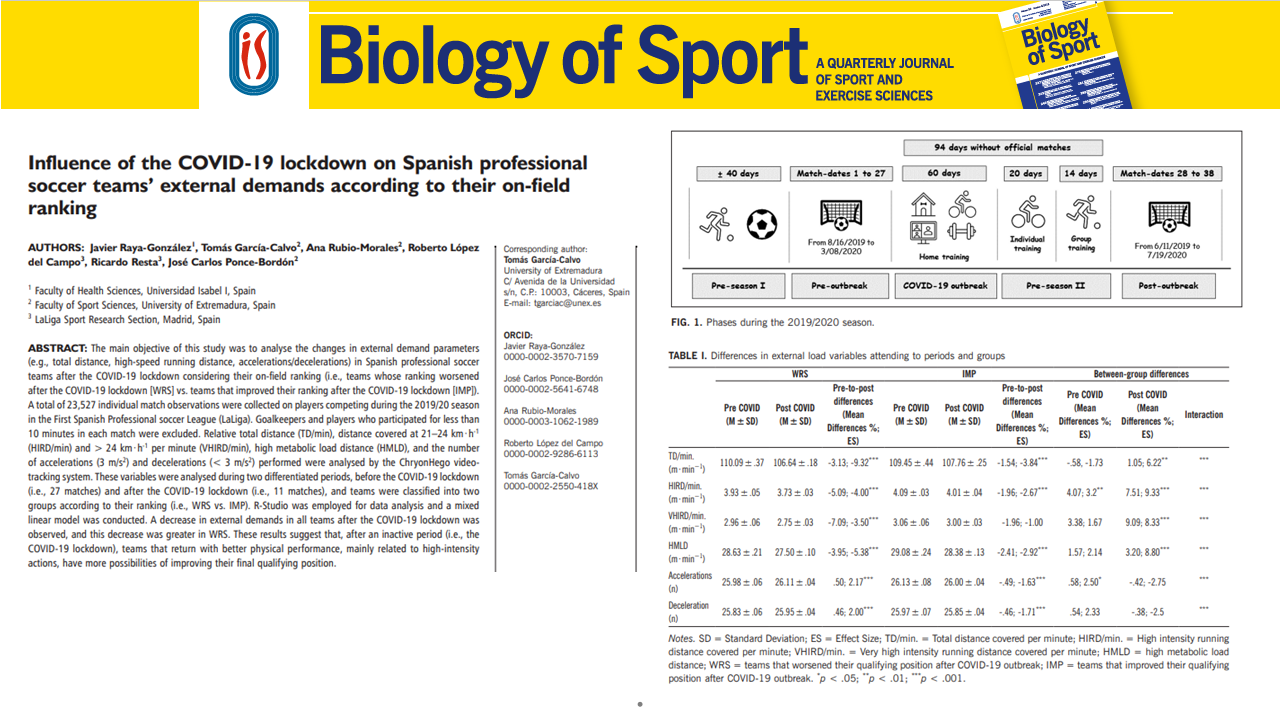
18 Feb Influence of the COVID-19 lockdown on Spanish professional soccer teams’ external demands according to their on-field ranking
Posted at 12:13h
in Paper
The COVID-19 lockdown created one of the most unusual challenges in modern football. LaLiga teams had to stop training together, prepare individually at home, and later return to competition with only a short pre-season and a congested schedule of 11 matches in 38 days. This study analyzed more than 23,000 match observations from the 2019/20 season to understand how this break affected physical performance and, ultimately, on-field results.
Key insights for coaches and performance staff:
- Physical drop was unavoidable: All teams showed decreases in total distance, high-intensity running, and high metabolic load after the lockdown.
- Ranking made the difference: Teams that worsened their league position (WRS) suffered larger decreases, especially in very high-intensity running (>24 km/h). In contrast, teams that improved their ranking (IMP) managed to maintain higher values in these decisive actions.
- Acceleration vs. efficiency: WRS teams increased accelerations and decelerations after the lockdown, but this was not enough to compensate for the loss in high-intensity running. IMP teams showed a more balanced profile, sustaining critical high-speed efforts.
- Preparation matters: The study highlights the importance of longer group training phases and friendly matches before official competition to recover match fitness and avoid performance drops.
Practical applications:
- Plan for progressive reconditioning after long breaks, prioritizing high-intensity actions and game-like situations.
- Use accelerations/decelerations data carefully—more is not always better if players cannot sustain high-speed running.
- Anticipate fixture congestion with targeted recovery strategies and rotation policies to protect performance levels.
Read the full paper here (DOI): https://doi.org/10.5114/biolsport.2022.113294


